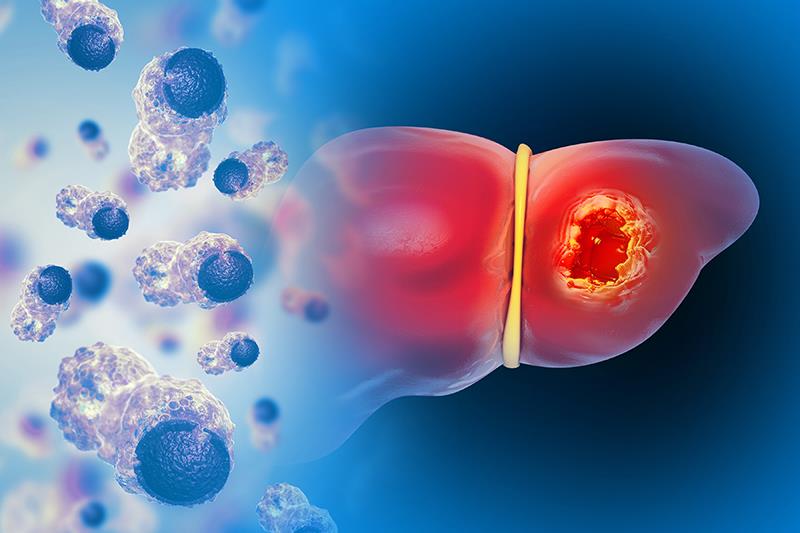Lenvatinib-pembrolizumab plus TACE promising for intermediate-stage liver cancer





The first interim analysis of the phase III LEAP-012 study shows the potential of lenvatinib, pembrolizumab, and transarterial chemoembolization (TACE) as a new treatment option for intermediate-stage hepatocellular carcinoma (HCC).
“The LEAP-012 study showed a clinically meaningful and statistically significant improvement in the primary endpoint of progression-free survival (PFS) for patients with intermediate-stage HCC who received lenvatinib plus pembrolizumab plus TACE (lenvatinib arm) vs dual placebo plus TACE (placebo arm),” said Dr Josep Llovet from the Icahn School of Medicine at Mount Sinai, New York, New York, US, at The Liver Meeting 2024.
Median PFS by blinded independent central review (BICR) was longer in the lenvatinib vs the placebo arm (14.6 vs 10 months; hazard ratio [HR], 0.66; pone-sided=0.0002). PFS at 18 months was 39.1 percent in the former and 27.9 percent in the latter. [The Liver Meeting 2024, abstract 5001]
“The substantial between-group difference was also observed in the subgroup analysis … The early separation of the curve observed at the first 9-week scan continued beyond 24 months,” noted Llovet.
There was a favourable overall survival (OS) trend, but the significance threshold was not met at 24 months (74.6 percent [lenvatinib arm] vs 68.6 percent [placebo arm]; HR, 0.80; pone-sided=0.0867). Although the OS data were immature, Llovet noted that this will be validated in future analyses.
Time to progression by BICR was better in the lenvatinib vs placebo arm (median 16.6 vs 10.2 months), both per RECIST v1.1 (HR, 0.59) and mRECIST (HR, 0.56; pone-sided<0.0001 for both).
A similar trend favouring the lenvatinib over the placebo arm was observed in terms of objective response rate (ORR) per RECIST v1.1 by BICR (46.8 percent vs 33.3 percent; pnominal=0.0005), which was primarily driven by partial responses (43.5 percent vs 29.2 percent).
Likewise, the lenvatinib arm outdid the placebo arm in terms of ORR per mRECIST by BICR (71.3 percent vs 49.8 percent; pnominal<0.0001), but this was mainly driven by the proportion of participants who achieved complete responses (56.1 percent vs 33.7 percent).
Compared with the placebo arm, the lenvatinib arm had fewer participants resorting to second-line systemic regimens (22.8 percent vs 31.3 percent) and liver-directed therapy (39.7 percent vs 46.5 percent).
The lenvatinib arm had a higher incidence of grade 3/4 treatment-related adverse events (TRAEs; 71.3 percent vs 31.1 percent), serious TRAEs (33.3 percent vs 12.4 percent), TRAEs leading to discontinuation of both agents (8.4 percent vs 1.2 percent), and grade 5 TRAEs (1.7 percent vs 0.4 percent).
The same was true for immune-mediated AEs and infusion reactions that are grade 3–5 in severity (8.9 percent vs 1.7 percent) and led to drug discontinuation (2.5 percent vs 0 percent) or high-dose systemic corticosteroid therapy (5.1 percent vs 1.2 percent).
“In combination with TACE, the safety profile of lenvatinib + pembrolizumab was manageable and consistent with [their] known safety profiles. There were no new safety concerns identified,” Llovet said.
TACE alone tied to poor PFS
Although TACE has been the standard-of-care for intermediate-stage HCC for the last 20 years, median PFS remains poor (7–8 months). [Hepatol 2023;78:1922-1965; Lancet Gastroenterol Hepatol 2017;2:565-575; Hepatol 2021;73:158-191] Lenvatinib is a first-line (1L) treatment option for patients with unresectable HCC who are ineligible for or refractory to TACE, while pembrolizumab is a second-line treatment option for select HCC patients who have not had prior anti-PD-(L)1 therapy. [Hepatol 2023;78:1922-1965; Lancet 2018;391:1163-1173]
In the phase III LEAP-002 study, 1L lenvatinib + pembrolizumab demonstrated a trend for prolonged OS in advanced HCC. [Lancet Oncol 2023;24:1399-1410]
Llovet and colleagues randomized 480 patients (median age 66 years, 82.9 percent men) 1:1 to lenvatinib 12 mg (body weight [BW] ≥60 kg) or 8 mg (BW <60 kg) PO QD + pembrolizumab 400 mg IV Q6W (up to 2 years) + TACE or dual placebo + TACE.
Eligible participants are those with confirmed HCC who are not amenable to curative treatment, with ≥1 measurable HCC lesion per RECIST v1.1, with lesions treatable with TACE in one or two sessions, without portal vein thrombosis or extrahepatic spread, and had Child-Pugh liver class A disease and ECOG PS 1 or 1. Median follow-up was 25.6 months.